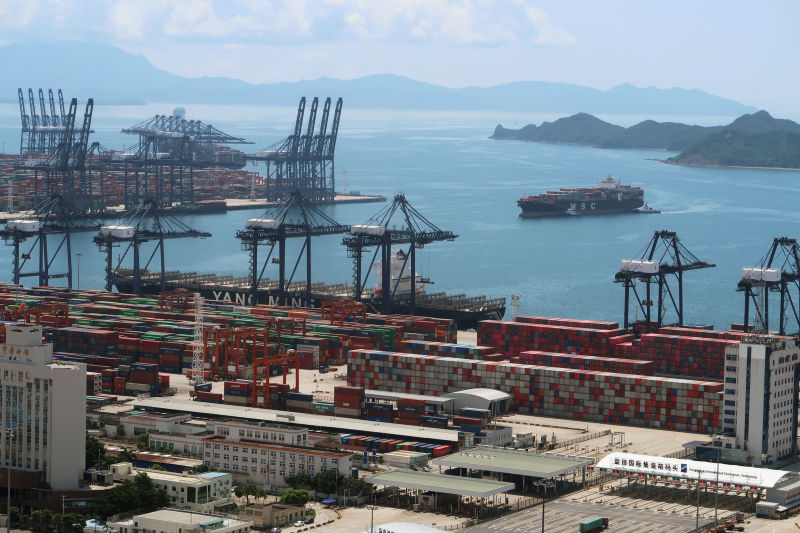Customs data on Tuesday revealed that China suffered a severe trade trade slump in July.
Exports and imports dropped by much more than expected amid weak global demand. The news puts more pressure on policymakers in Beijing for further stimulus to boost growth.
Imports dropped 12.4% in July year-on-year, which was well over an anticipated fall of 5% forecast in a Reuters poll and followed a 6.8% decline in June.
Meanwhile, exports contracted 14.5%, which was steeper than an expected 12.5% decline and the 12.4% fall in June.
The grim trade numbers reinforce expectations that economic activity could slow further in the third quarter, with construction, manufacturing and services activity, foreign direct investment and industrial profits all weakening.
ALSO SEE: China, US, India Face Climate Change Debt-Cost Time Bomb
Impact exacerbated by fall in commodity prices
The pace of the country’s export decline was the fastest since the onset of the pandemic in early 2020, while the tumble in imports was the biggest since January, when Covid infections shut shops and factories.
While the weakness in the value of imports reflects poor demand, falls in commodities prices have also exacerbated the headline declines, analysts say.
“Most measures of export orders point to a much greater decline in foreign demand than has so far been reflected in the customs data,” Julian Evans-Pritchard, head of China economics at Capital Economics, said.
“And the near-term outlook for consumer spending in developed economies remains challenging, with many still at risk of recessions later this year, albeit mild ones.”
The yuan hit a three-week low and Asian stocks and the Australian and New Zealand dollars, seen as proxies for Chinese growth, turned weaker after the data.
Exports to the US down 23%, EU 20.6%
China’s economy grew at a sluggish pace in the second quarter as demand weakened at home and abroad, prompting top leaders to promise further policy support and analysts to downgrade their growth forecasts for the year.
The value of China’s exports declined 5% year-on-year in the first half of the year despite total cargo throughput increasing an annual 10% in the second quarter and 8% in the first, according to Fitch.
The headline import figure was worse than forecast because “economists may be misunderstanding the price factors underlying commodities, which dominate Chinese imports,” explained Xu Tianchen, senior economist at the Economist Intelligence Unit.
“For example, China is importing more oil but at lower prices, as a result the volume of crude oil accelerated in July, but the import value slowed. Similar logic holds for grains and soybeans.”
Crude oil shipments to the world’s biggest oil importer were 17% higher in July than the same period last year, but fell 18.8% from the previous month to the lowest daily rate since January, while soybean imports in July jumped 23.5% from a year ago, off the back of near-record production in Brazil.
Exports to the United States – the top destination for Chinese goods – tumbled 23.1% year-on-year, while shipments to the European Union fell 20.6%, as diplomatic tensions mount over chip technology and “de-risking” from China.
South Korean exports to China, a leading indicator of Chinese demand for global goods, fell 25.1% in July from a year earlier, the sharpest decline in three months.
Beijing is looking for ways to boost domestic consumption without easing monetary policy too much lest it triggers large capital outflows.
The state planner last week said stimulus would be forthcoming, but investors have so far been underwhelmed by proposals to expand consumption in the automobile, real estate and services sectors.
- Reuters with additional editing by Jim Pollard
ALSO SEE:
China’s Exports Plunge 12% in June, Most in Three Years
Multiple Moves Needed to Defuse China’s Local Debt Crises
US Curbs on Investments in Critical China Tech Likely This Week
























